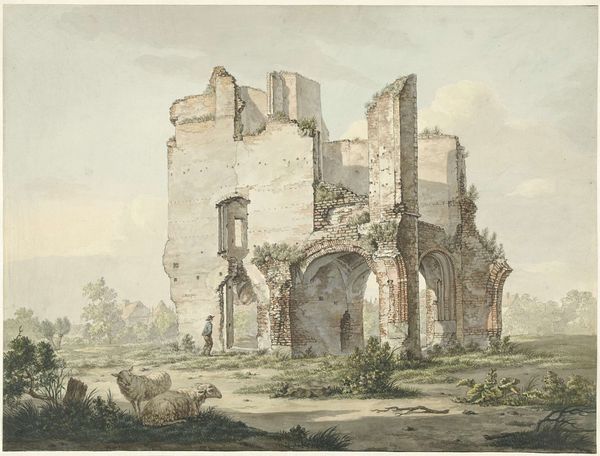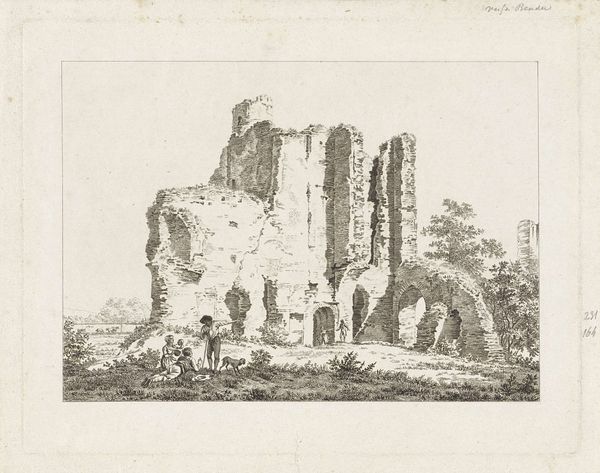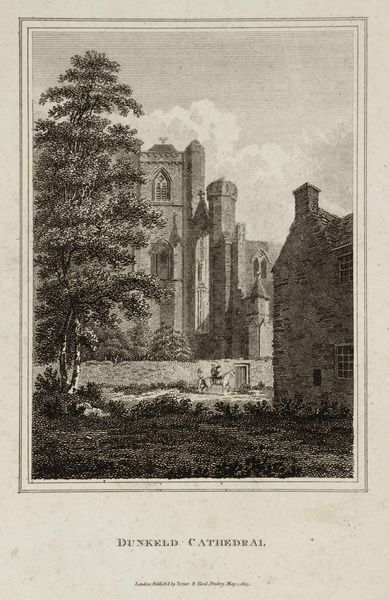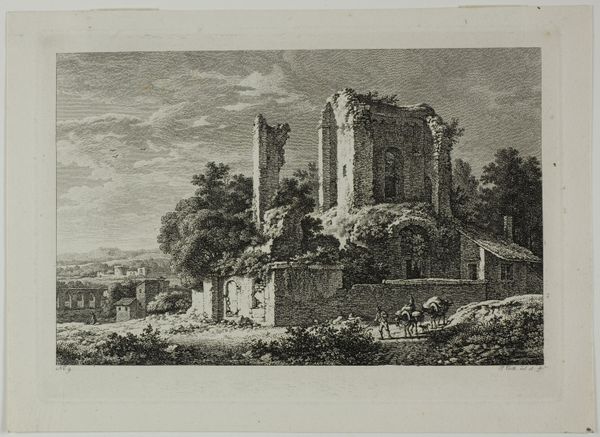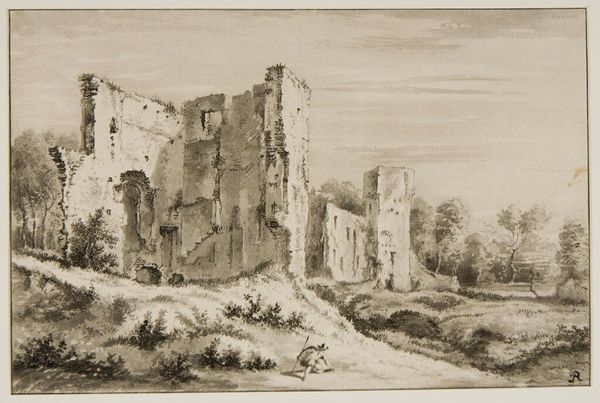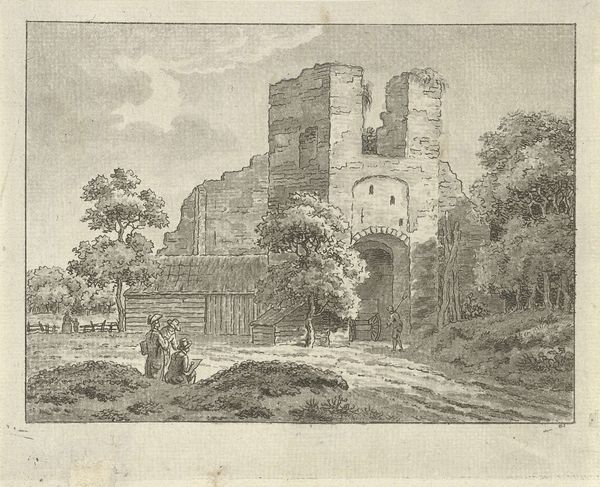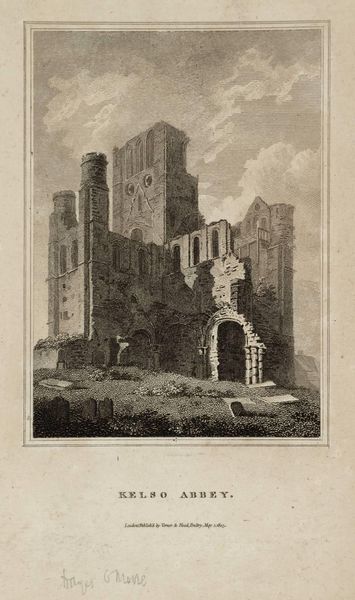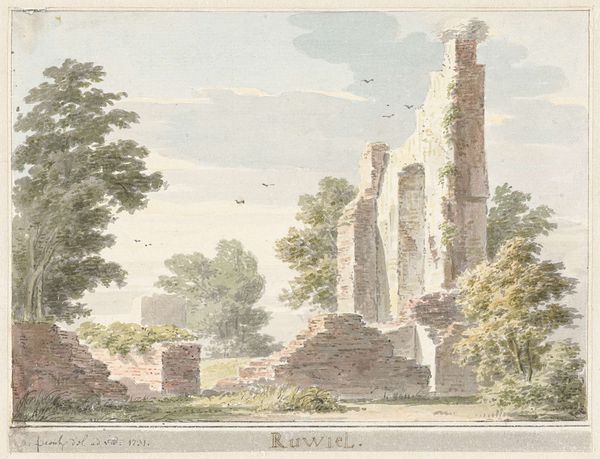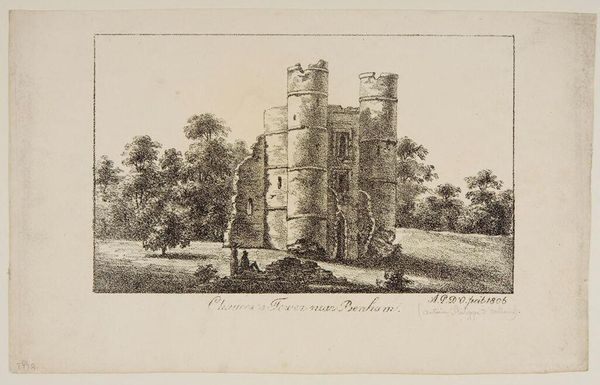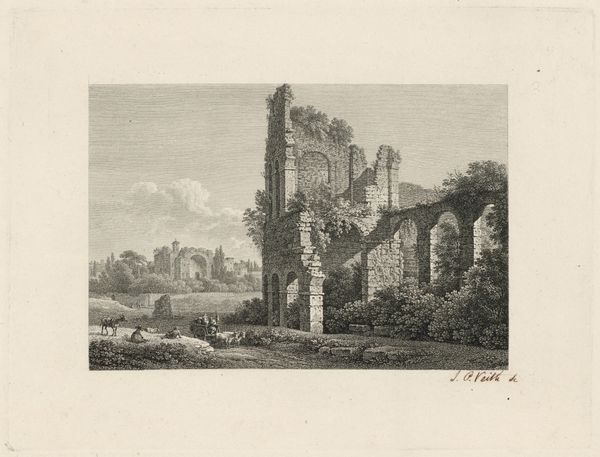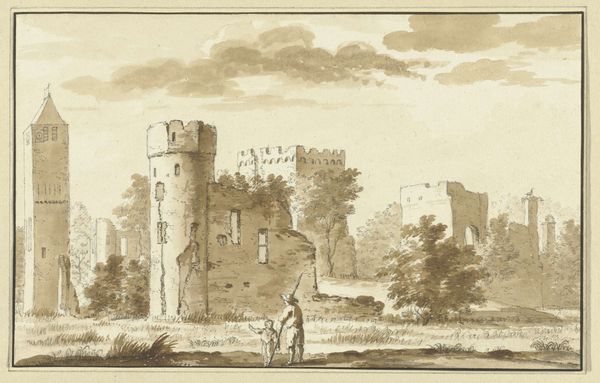
Dimensions: height 320 mm, width 420 mm
Copyright: Rijks Museum: Open Domain
Editor: This delicate watercolor, "Ruïne van de abdij van Rijnsburg" by Hermanus Numan, painted somewhere between 1754 and 1820, has such a melancholic beauty. The abbey's remains are rendered in soft, muted tones, almost dreamlike. What whispers to you when you look at it? Curator: Ah, yes! For me, it's the sheer romanticism that engulfs the scene, like a sigh escaping from history itself. The ruins stand as a stark reminder of time’s relentless march. Notice how Numan captures the delicate interplay between nature reclaiming its space, the crumbling architecture and how nature reclaims it, twining around stones. The light feels almost spiritual, doesn't it? What feelings stir within you contemplating our mortality and the fleeting nature of human endeavor, gazing upon those stones? Editor: That's beautifully put. The spiritual light and sense of mortality weren't immediately apparent to me, but now that you mention it, I see how the scene inspires this kind of quiet contemplation. But why paint ruins? What's so appealing about decay? Curator: Precisely! Think about it: the late 18th and early 19th centuries were obsessed with the past. Ruins like these became symbols of a bygone era, provoking feelings of nostalgia, loss, and even awe at the power of nature and the ephemerality of empires. Isn't it funny how we find beauty in destruction? And don't you find a strange peace in watching time unfold its drama across such landscapes? Editor: It *is* kind of funny. It definitely gives you something to ponder. I guess looking at art is a bit like archaeology - piecing together fragments of history and personal experience. Curator: Exactly! It is finding resonance in the whispers that travel through the canvas! Thanks to Numan, we heard one!
Comments
No comments
Be the first to comment and join the conversation on the ultimate creative platform.
